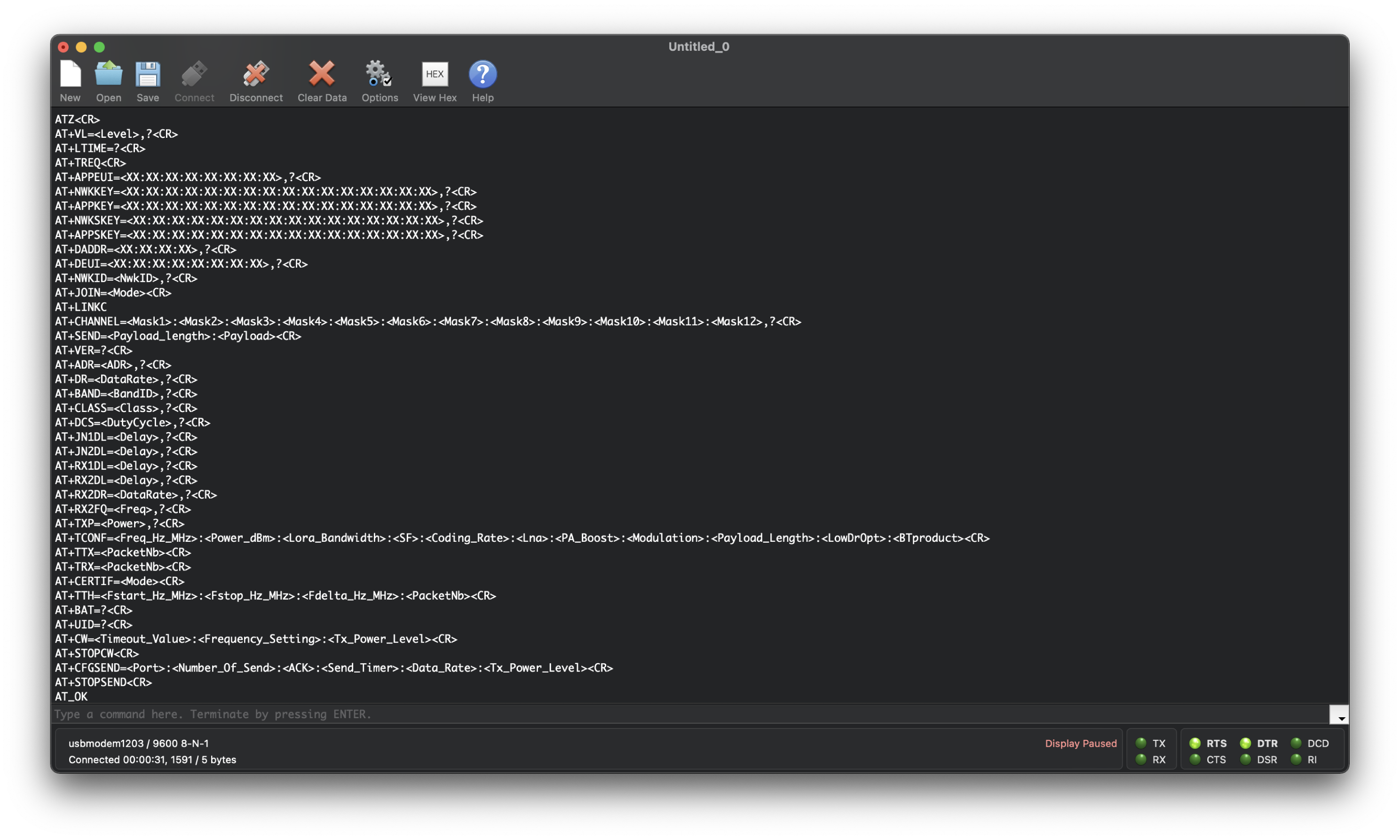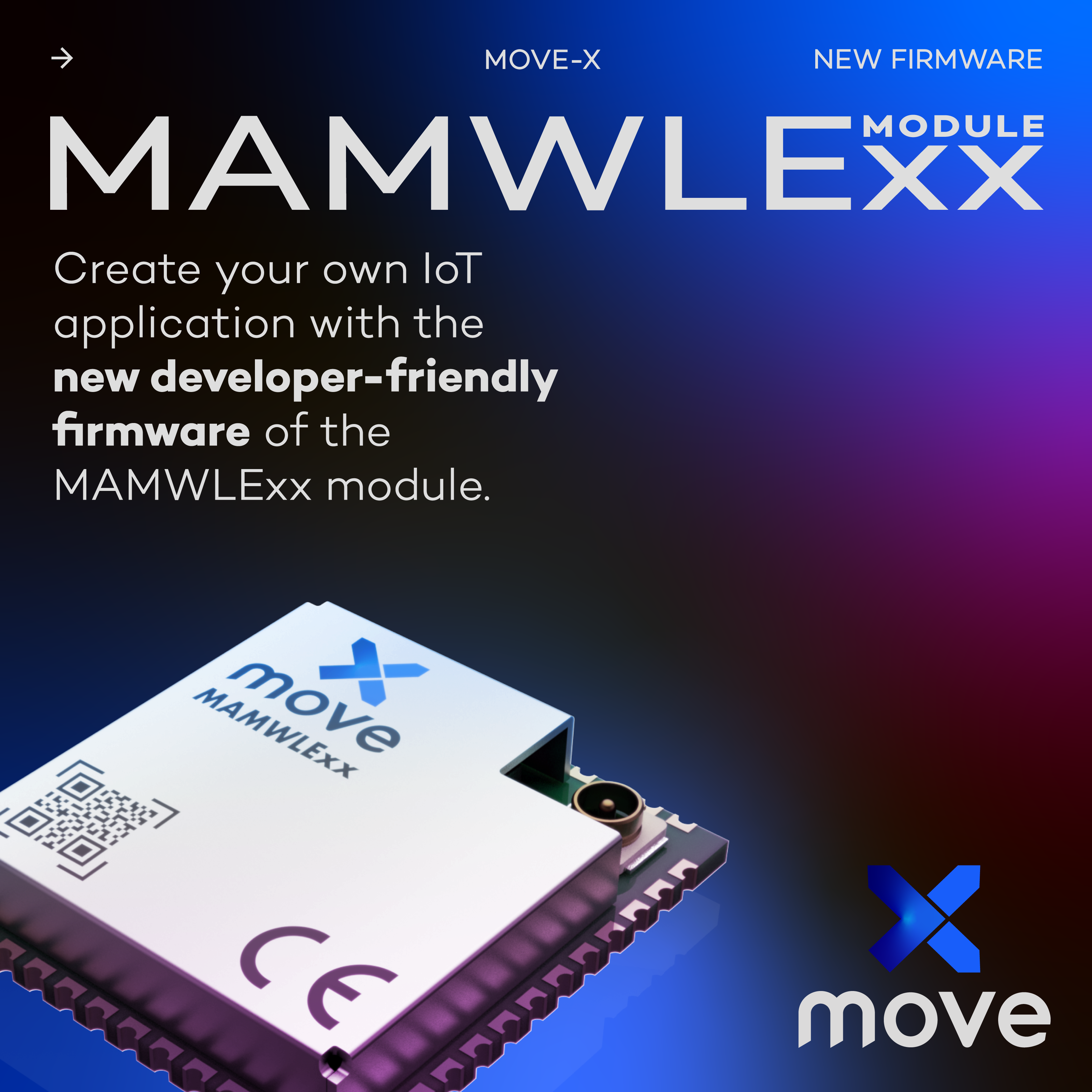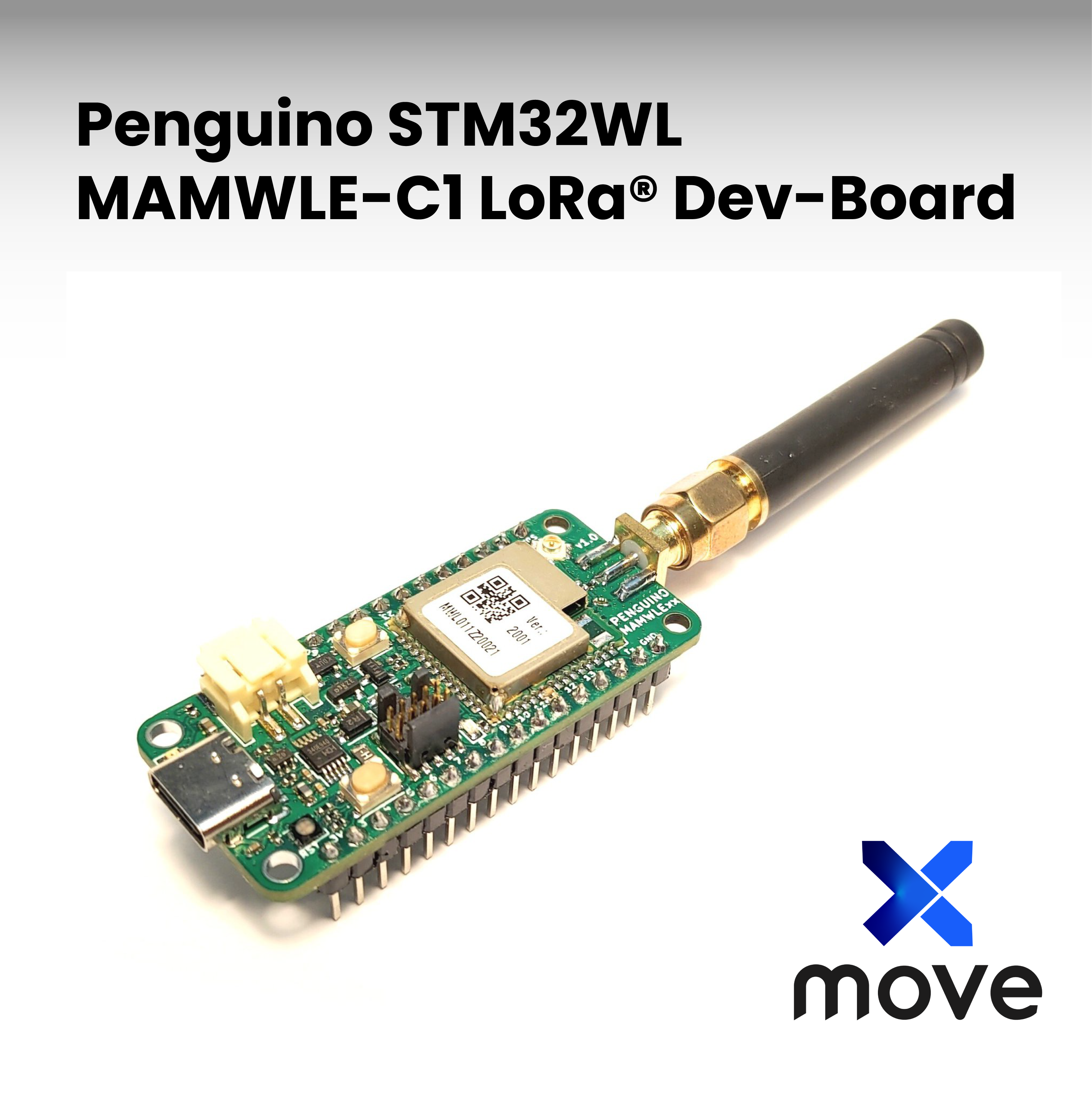MAMWLExx module: new AT Commands Firmware is out.
Move-X is pleased to announce the release of the new AT Commands firmware for the STM32WLE based MAMWLE radio module.
Create your IoT application with this new developer firmware, thanks to this the MAMWLE module:
- is now compatible with any other microprocessor or microcontroller on the market;
- is compliant with LoRaWAN® bands EU868, AU915 and US915;
- has reduced power consumption, only 2uA in sleep mode;
- comes with an extensive list of AT commands.
DOWNLOAD THE NEW FIRMWARE
Download the new MAMWLE module firmware via our GitHub page:
AT DOCUMENTATION
The aim of this project is to show an example of an end-device LoRaWAN® stack implementation with particular AT Commands.
Introduction
This FW example permits to interface with the LoRaWAN® to manage LoRa® wireless link via AT commands or with ANY microprocessor or microcontroller via serial interface. The LoRaWAN® bands compliant with this FW are the EU868, AU915 and US915, while the classes admitted are A and C. In the official documentation are listed all the characteristics of this code, like the admitted microcontrollers (STM32WLE5JB and STM32WLE5JC), power consumptions (only 2uA in sleep mode, class C), memory occupation (79.92 KB and 99.73 KB respectively in release and debug modes), a brief guide on how to set serial communication with the microcontrollers and how to import this project into STM32CubeIDE (proprietary IDE of STMicroelectronics).
This FW can be:
- the starting point of any more complex project;
- used for validating a node or an external application;
- tried JUST FOR FUN.
The FW explained in this note is the 1.0 version.
Release and debug mode
This FW has two operational modes: release and debug. The former is the commercial mode, with minimal and fixed output from the node, minimum dimension and power consumption, while the latter is the prototyping mode, with extensive message returned from the node. Going in release mode automatically disable the debugger and activate low power mode. In the official documentation is described how to switch between the two modes and how to set one of them to the node (see pp.6-7-8 of official documentation).
AT COMMAND
These improved commands permit to send directly in LoRa® level (physical) or LoRaWAN® (MAC) and to retrieve some important information from the node (battery level, time, send parameters, active channels ecc.).
Here are the list of AT commands implemented in this FW version, together with the parameters you must insert (if present):
- ATZ
- AT?
- AT+TXP=Power Index
- AT+BAND=LoRa Region
- AT+DEUI=Device EUI
- AT+APPEUI=Application Key
- AT+NWKKEY=Network Key
- AT+APPKEY=Application Key
- AT+JOIN=Join type
- AT+CHANNEL=Mask0:Mask1:Mask2:Mask3:Mask4:Mask5:Mask6:Mask7:Mask8:Mask9:Mask10:Mask11
- AT+ADR=ADR type
- AT+DR=Data Rate
- AT+CW=Timeout:Frequency:Power level
- AT+STOPCW
- AT+CFGSEND=Port:Number of send:Ack:Send timer:Datarate:Power index
- AT+SEND=Payload Length:Payload raw
- AT+STOPSEND
- AT+VL=verbosity level:timestamp flag
- AT+VER=?
- AT+DADDR=device address
- AT+DCS=value
- AT+RX2FQ=frequency
- AT+RX2DR=Datarate
- AT+RX1DL=delay
- AT+RX2DL=delay
- AT+JN1DL=delay
- AT+JN2DL=delay
- AT+NWKID=network ID
- AT+CLASS=class value
- AT+LTIME=?
- AT+TREQ
- AT+BAT=?
- AT+TTH=Start frequency:Stop frequency:frequency resolution:number of packets to send
- AT+TCONF=TX frequency:TX power:BW:SF:4/CR:LNA state:Boost PA state:Modulation type:Payload length:Low DR optimization:BT FSK product
- AT+TTX=Send’s number:Channel frequency:Spreading Factor:BW
- AT+TRX=Packet’s number to receive:Channel frequency:Spreading Factor:BW
In the official documentation, there are exhaustive examples and some relevant screenshots.

REFERENCE DOCUMENTS
1. [FW Documentation](https://www.move-x.it/wp-content/uploads/2022/01/MAMWLE-FW-AT-Command-Document.docx.pdf)
2. [MAMWLExx Module] (https://www.move-x.it/mamwle-module/)
3. [LoRaWAN 1.0.3 Specification by LoRa Alliance® Specification Protocol – 2018, January](https://lora-alliance.org/resource_hub/lorawan-specification-v1-0-3/)
4. [Application note How to build a LoRa application with STM32CubeWL (AN5406)](https://www.st.com/resource/en/application_note/an5406-how-to-build-a-lora-application-with-stm32cubewl-stmicroelectronics.pdf)
5. [User manual Description of STM32WL HAL and low-layer drivers (UM2642)](https://www.st.com/resource/en/user_manual/dm00660673-description-of-stm32wl-hal-and-lowlayer-drivers-stmicroelectronics.pdf)
6. [STM32WLE5JB documentation (datasheet, manuals, application examples etc.)](https://www.st.com/en/microcontrollers-microprocessors/stm32wle5jb.html#documentation)
7. [STM32WLE5JC documentation (datasheet, manuals, application examples etc.)](https://www.st.com/en/microcontrollers-microprocessors/stm32wle5jc.html)
8. [LoRa alliance certification deepening](https://lora-alliance.org/wp-content/uploads/2020/11/lora_alliance_certification_deep_dive.pdf)










